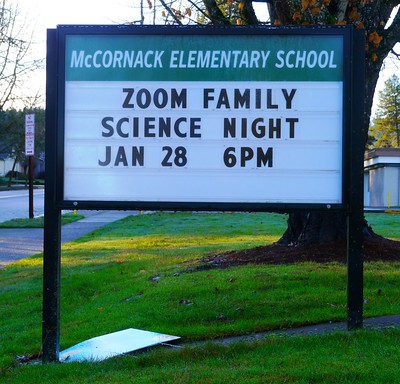There’s a viral video on TikTok right now that’s opened a discussion about the educational state of K-12 children in post-pandemic America. Qbthedon, who is a third-year 7th grade teacher says in a video that’s received more than 4.5M views, that no one is talking about how far post-pandemic students have fallen behind. Worse, the students are being advanced to the next grade no matter what.
The video has sparked a spate of response videos from K-12 teachers around the nation who share the same sentiments. Their concerns are that the students in their classrooms are so far behind that the teachers cannot teach the materials that their state standards require for a given grade level. Teachers complain that students are years behind and that each year, students fall even shorter of what’s expected.
That’s important because some of these post-pandemic students will soon be seeking college admission, and post-secondary schools don’t know what to expect. EAB, the publisher of the ACT standardized test, revealed earlier this month that the national average score on the most recent ACT exam was 19.5, a decline of .3 points over last year, and the lowest average score since 1991. ACT test-takers in Michigan scored an average of 24.4. As a point of comparison, the average ACT score of admitted students at the University of Michigan in 2023 was 33. (The maximum score on the test is 36.)
The story is that same for the SAT, which is published and administered by the College Board. The average score on the SAT for 2023 test-takers was 1,028. (Michigan test takers’ average 2023 SAT score was 958.) For reference, the average SAT score of admitted students at the University of Michigan in 2023 was 1,435. (The maximum score on the SAT is 1,600.)
How can we recover academic losses for post-pandemic students?
So, why is this important for a community college, which doesn’t require standardized test scores for admission? It represents an even larger opportunity than I first wrote about earlier this year. Students who can’t perform basic math operations won’t advance into STEM careers, no matter how well you market to them. If these post-pandemic students are to be successful in high school and eventually in college, they need math and literacy assistance now. And it appears as though they will need it consistently through high school.
Creating non-credit programs for middle and high school students to catch up to their expected grade level performance is not only a good idea; it’s necessary to ensure that those same students will be able to perform grade-level math in high school and college – regardless of where that college is.
If our community college can go out of its way to subsidize the educations of people who do not live or work in Washtenaw County, and will never set foot in our county or even our state, why can’t it also develop catch-up programs for students in K-12 schools in our county? Isn’t that a fundamentally better and more community-oriented use of our tax dollars?
Photo Credit: Rick Obst, via Flickr












